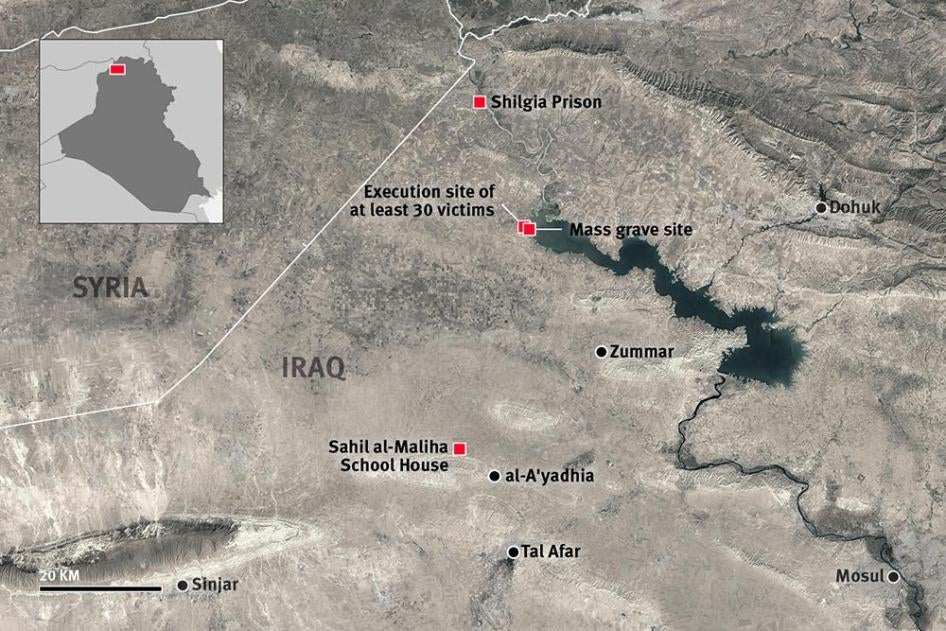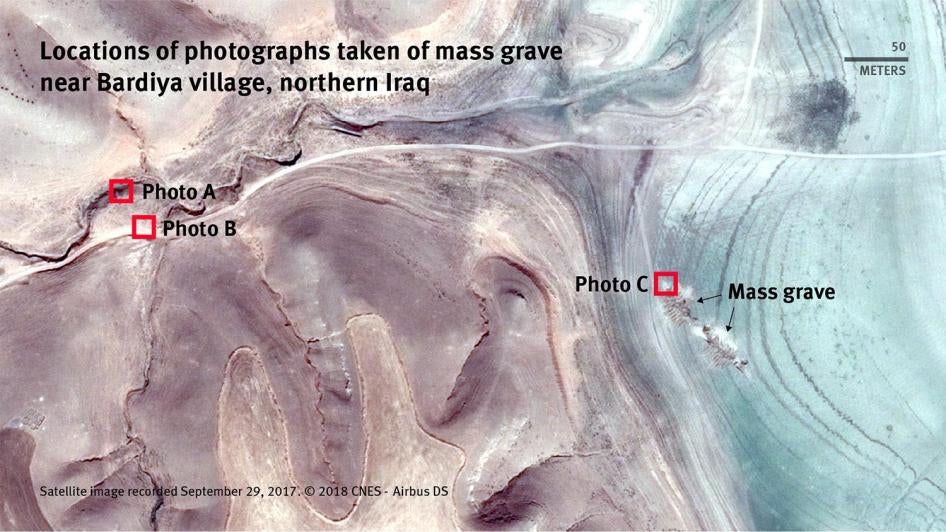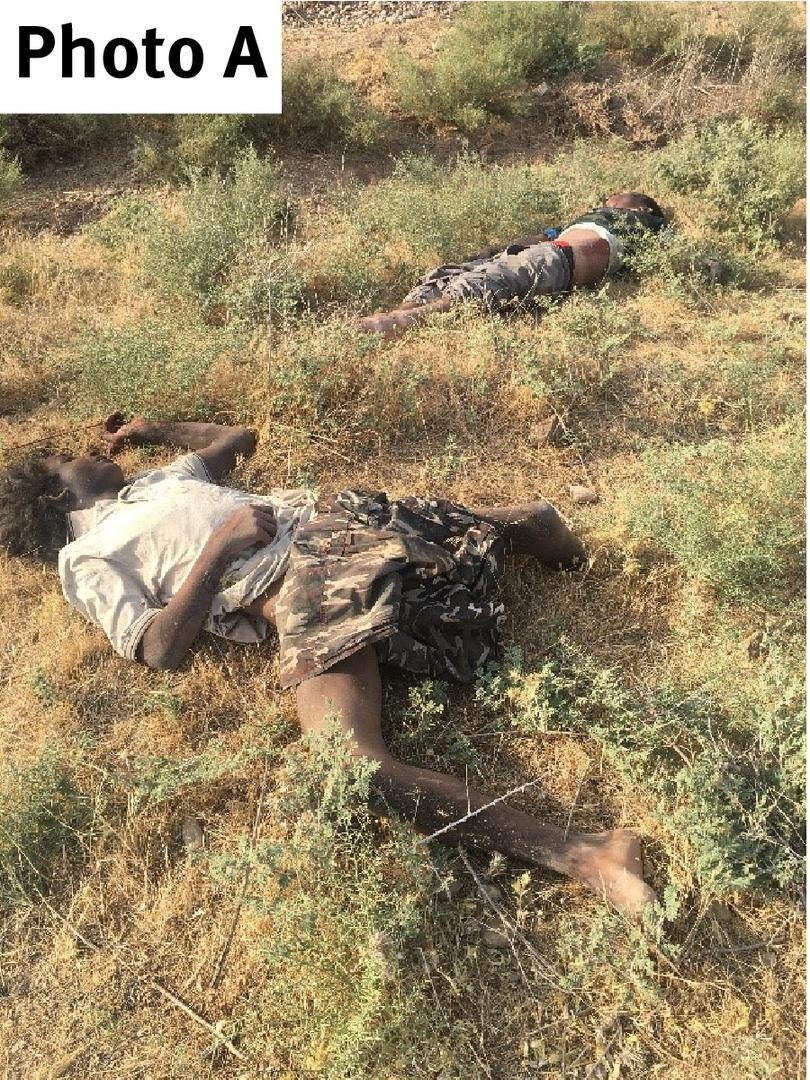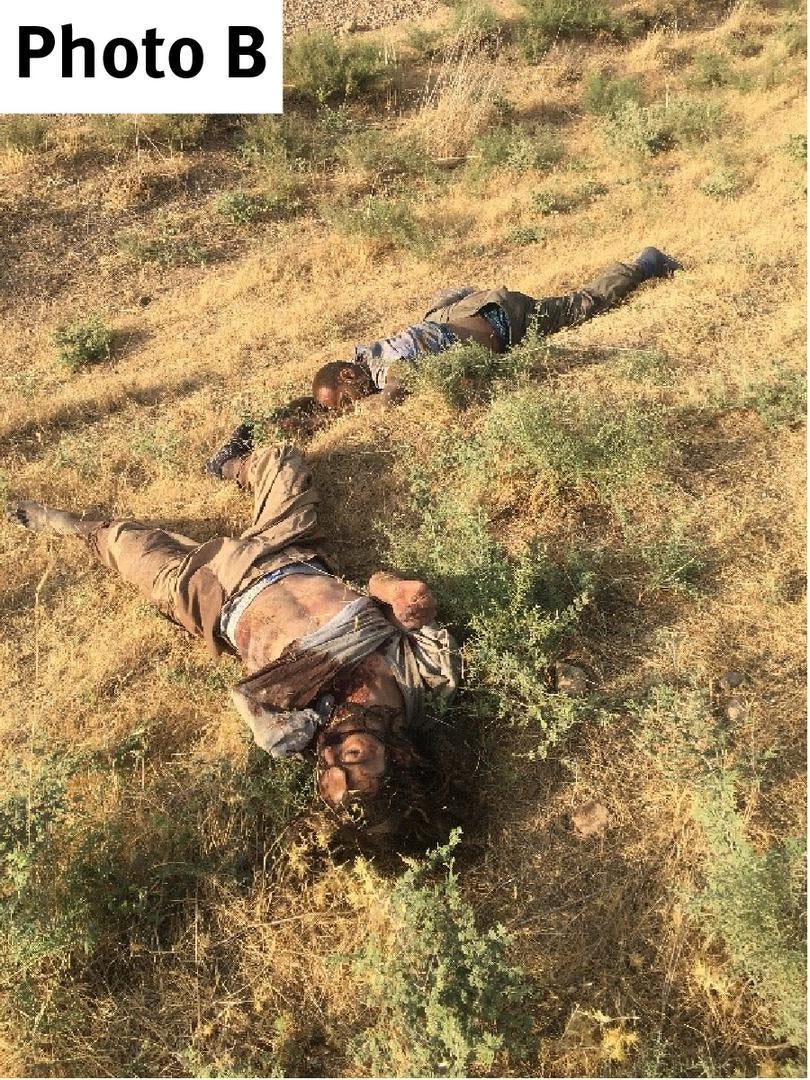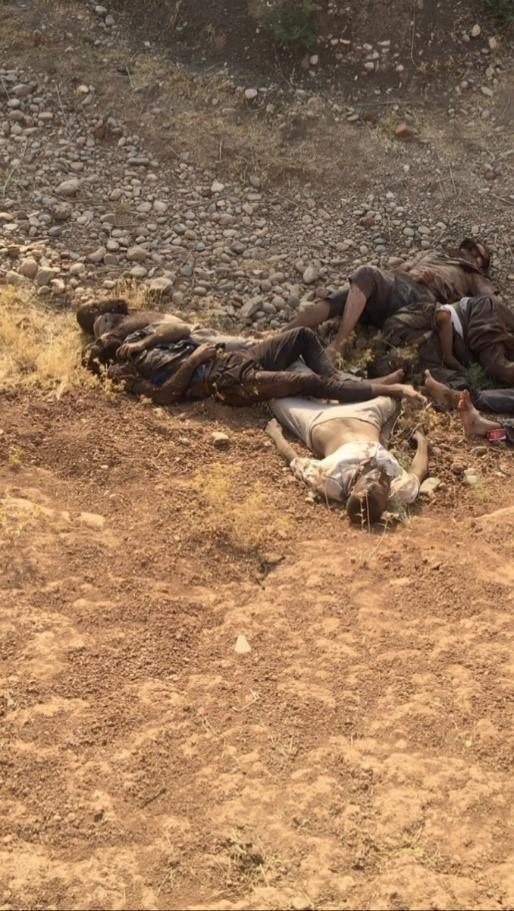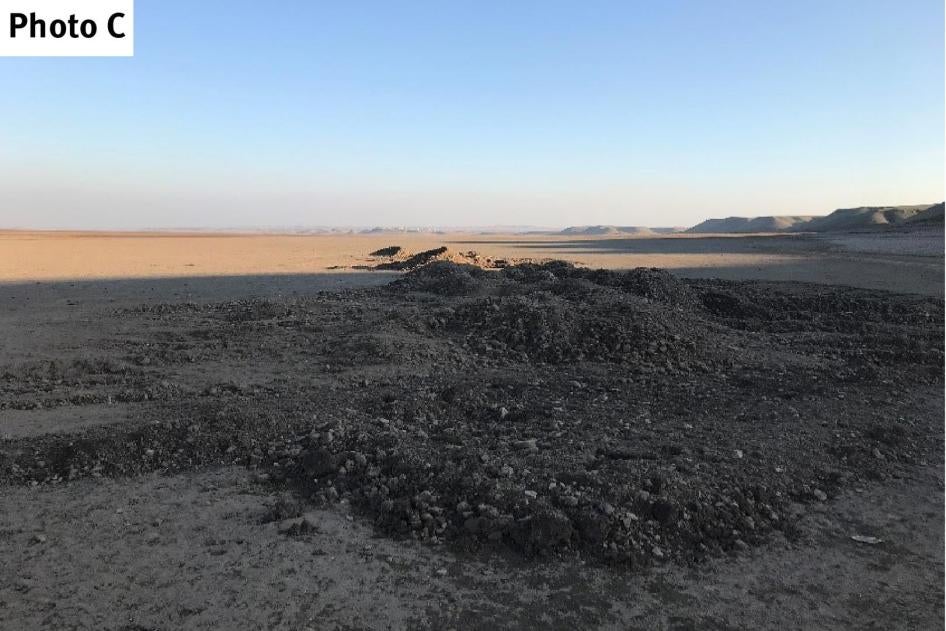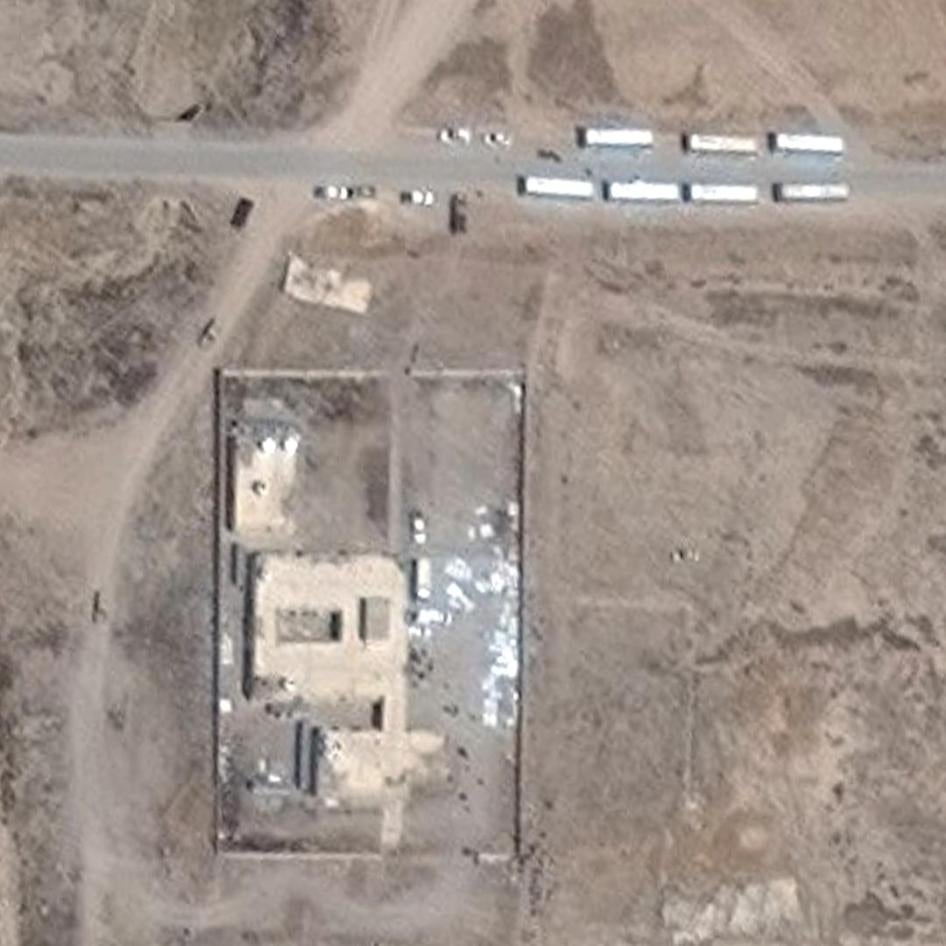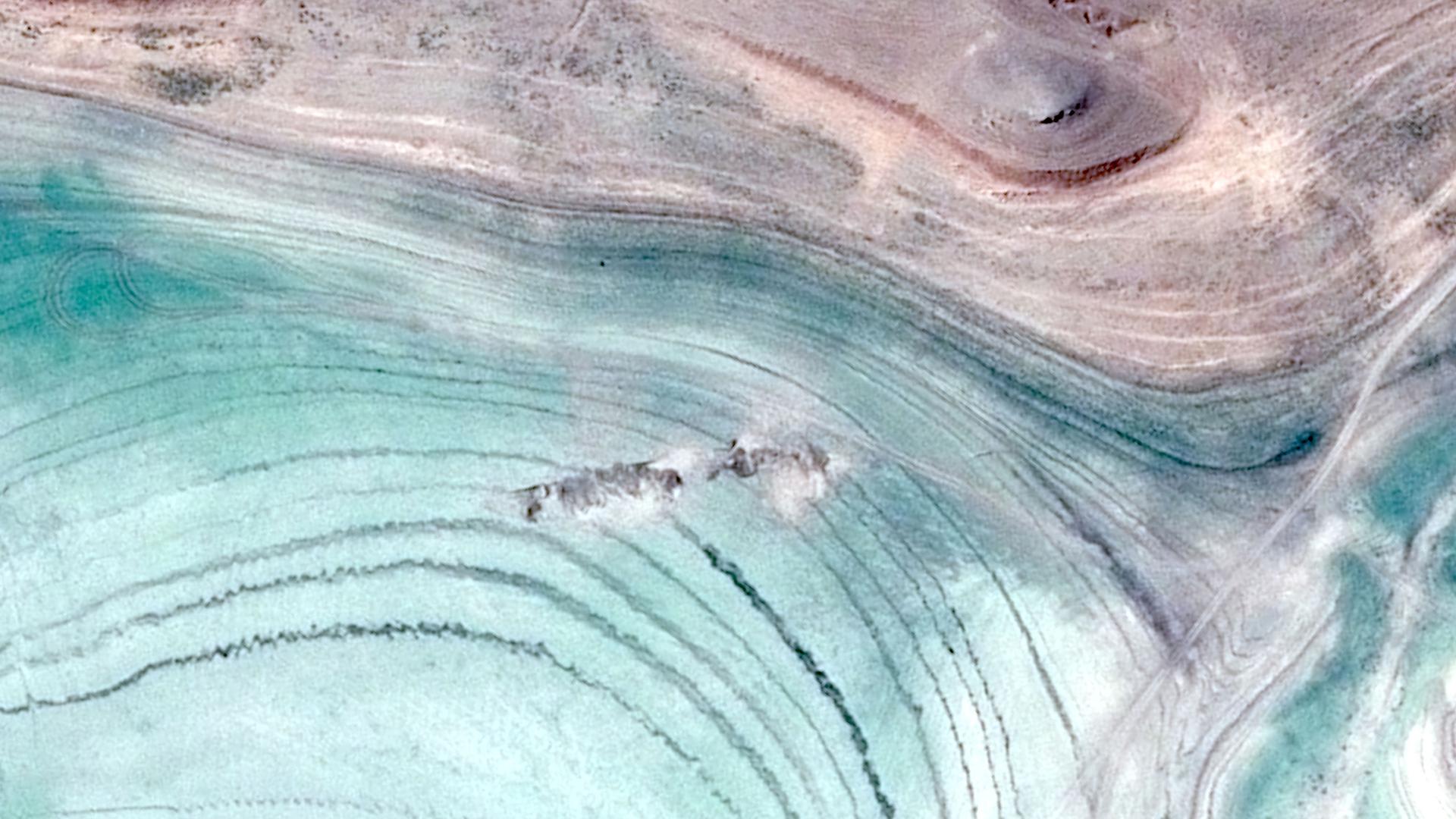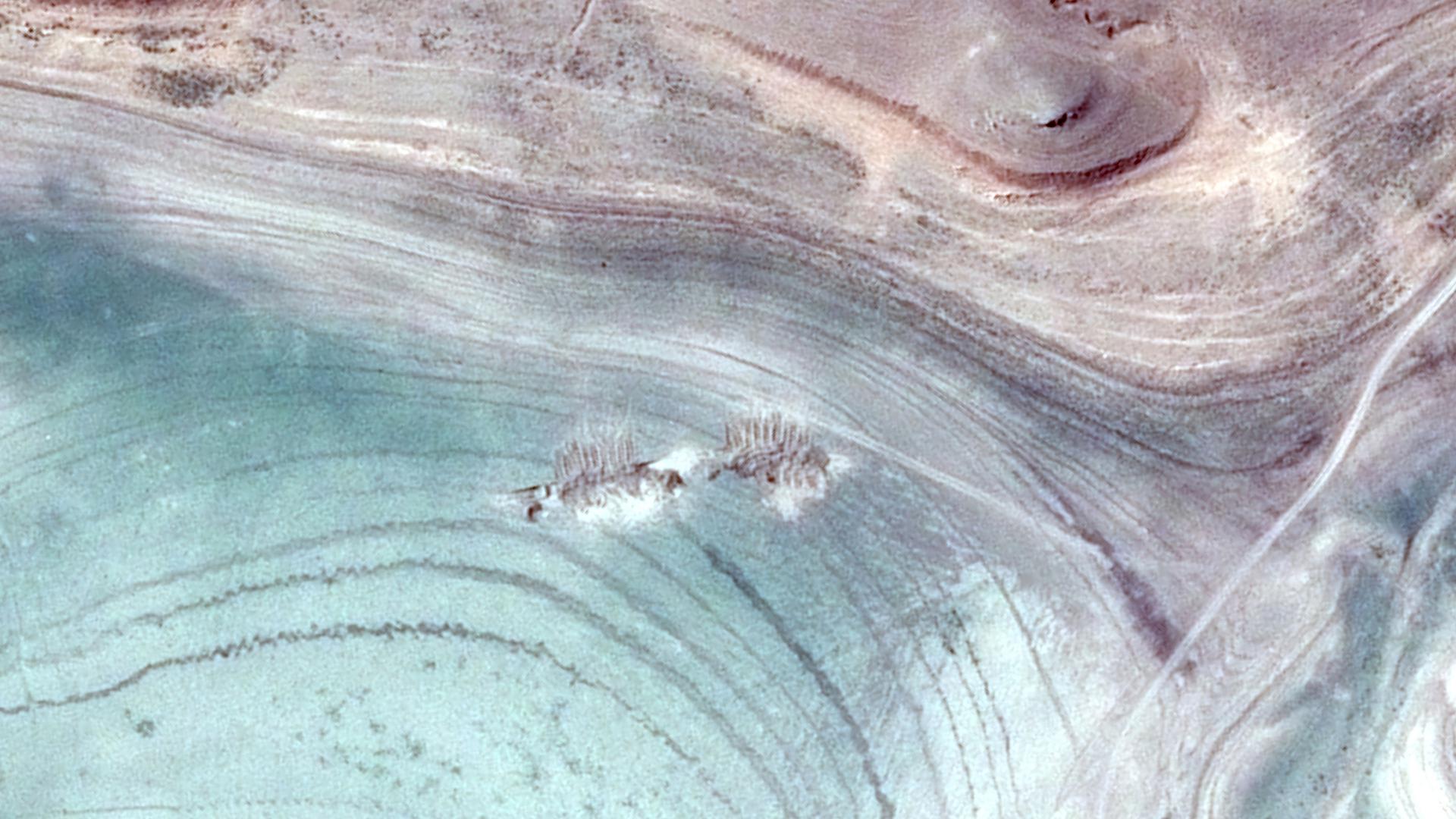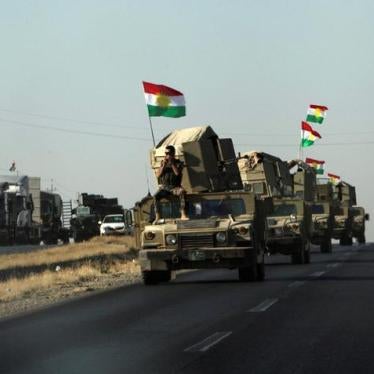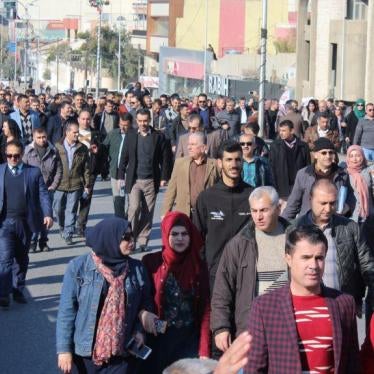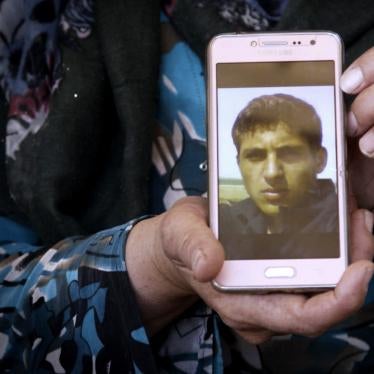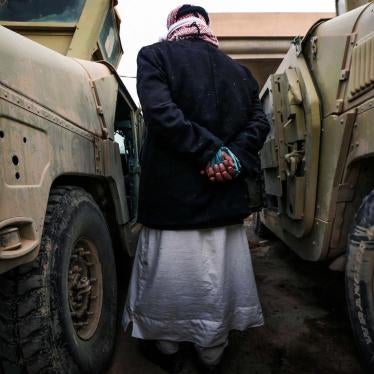Because the mass grave site is located within the flood zone of the Mosul Dam reservoir, it is critically important to urgently allow international forensic experts to conduct a detailed exhumation of the site before seasonal rains fill the reservoir again later this year and submerge the grave site, complicating the identification of bodies, Human Rights Watch said.
Human Rights Watch was not able to speak with witnesses to the executions. But other evidence suggest that Asayish forces executed the ISIS suspects. Human Rights Watch spoke to a now-retired security force member, “Nadim,” who was regularly in contact with the Asayish members who told him they participated in the executions. Researchers also analyzed video and photographic evidence, including geotagged photos of bodies and satellite imagery showing the apparent mass grave was created sometime between July 5 and September 3 by bulldozer, and interviewed residents of a neighboring village.
Nadim went to one of the execution sites on August 29, where he said he saw approximately 30 bodies hours after the first group of men are believed to have been executed. Human Rights Watch visited a mass grave site where Nadim and local villagers said bodies were buried on January 30, 2018, and a second time on February 6.
Nadim said that on August 29, a friend of his in the Asayish said that he and other Asayish members, all part of the West of the Tigris Asayish branch, had taken about 80 detainees suspected of ISIS affiliation from Shilgia prison the night before and had executed about 50 of them outside the village of Tal Ahmed Agha al-Kabir, and the others outside Bardiya village, which researchers visited.
Nadim said that a few hours later he traveled to the site near Bardiya, which he located based on information from locals who told him they discovered bodies there. There, he counted about 30 unburied bodies, all shot in the head, and took three photographs of them and two short videos. Human Rights Watch reviewed the photos and videos and was able to confirm based on their metadata that they were taken on August 29, 460 meters from a mass grave which was later created. In total, the photos and videos show at least 20 bodies of men. The bodies did not have visible injuries consistent with battle wounds or suicide attacks, were dressed in civilian clothing, and did not appear to have their hands bound or eyes blindfolded.
Nadim said that an Asayish security member also told him that in the evening of August 30, and through the early hours of the following morning, he and a group of other Asayish members loaded between 100 and 150 men into a large refrigerator truck, keeping them there, in freezing temperatures, for seven hours. They transported the men to the site of the previous executions near Bardiya, dumped the bodies of the men who had died in the truck from the cold or asphyxiation in a ditch, and shot and buried alongside them any who were still alive, he said.
Nadim’s statements were partially corroborated by photographic evidence posted on social media and another witness statement. A photo of what appears to be the truck that transported the detainees surfaced on Twitter on September 2 on at least two Twitter accounts, one of which has been suspended. One of the tweets states that Kurdish Peshmerga forces executed 375 ISIS members captured since August 27, northwest of Tal Afar. The other states that between August 27 and September 1, 375 ISIS fugitives from Tal Afar to Zummar and northwest al-A'yadhia were executed.
The photo shows a white truck and a pile of bodies underneath, in a ditch. A Bardiya villager also told Human Rights Watch that on an evening at the end of August, he saw Kurdish forces drive through the area with two large white refrigerator trucks.
The two tweets also included two other photos. One shows a man in what appears to be an Asayish uniform, his face painted over to hide his identity, standing over a pile of bloody bodies. The second shows over 15 bloodied bodies in a pile in an open grave. In both photos, the hands of some of the men appear to be bound.
Nadim said that on the days that followed, three Asayish members told him they were executing groups of men from Shilgia prison in the same area, temporarily burying them before later unearthing them and finally burying all of the bodies together in one mass grave using large digging equipment. The Asayish members told him that over seven days, they executed between 80 and 150 people each day.
About 20 days after the last executions, Nadim’s Asayish friends told him that a very senior security officer made a high-level visit to the Asayish office in Zummar, he said. He said that several senior local Asayish officers have not been seen in Zummar since the meeting, and his contacts in the Asayish have told him they have been detained. Human Rights Watch has not been able to verify if any officers were punished, and for what.
Human Rights Watch requested a comment from the KRG on the executions and in an email to Human Rights Watch on February 5, Dr. Dindar Zebari, the KRG coordinator for international advocacy, denied that the executions took place. He stated that according to the chief of the Asayish forces, Peshmerga forces were fighting on a 71-kilometer frontline with ISIS, as the group’s members attempted to escape to Syria. In the process of the battle many ISIS members were killed, along with many Peshmerga forces, “and the corpses of the killed ISIS members in this fighting were probably brought in one place to be buried.” The stretch of frontline that the response refers to is at its closest 40 kilometers from the site where researchers found the mass grave.
This explanation does not match the state the bodies were found in – shot in the head, in clusters, in a solitary desert area, far from where any fighting had occurred – according to Nadim and three Bardiya villagers.
The photos posted on social media on September 2 also show the hands of some of the men bound. The Zummar and Bardiya areas were occupied by ISIS for less than one month during late 2014, and there was no fighting there after that date, according to numerous security and military officers researchers interviewed.
According to the statement, the individuals at the school were considered internally displaced persons, not detainees, and were all transferred from there to camps for the displaced. International organizations present in the reception centers of the camps that the displaced families were bused to confirmed that no foreign adult men were among the arrivals and there were few Iraqi men.
KRG criminal justice authorities should investigate all alleged crimes, including unlawful killings, committed by any party in the conflict in a prompt, transparent, and effective manner, up to the highest levels of responsibility. Those credibly implicated should be appropriately prosecuted. Extrajudicial executions and torture during an armed conflict are war crimes. Authorities should also investigate the fate and whereabouts of the disappeared, Human Rights Watch said.
“There have been months of silence, but the Kurdistan Regional Government needs to be transparent about these deaths and punish anyone responsible for unlawful killings,” Fakih said.
From Sahil al-Maliha to Shilgia Prison
Human Rights Watch interviewed dozens of Iraqi families and 27 foreign women who said that between August 22 and 29, they and thousands of other Iraqis and foreigners approached Peshmerga forces near Sahil al-Maliha for screening. A video posted on various media outlets on August 30 shows Peshmerga forces lining up men, foreign and local, and gathering women and children to the side in a desert area.
Nadim and the families said that after the people approached, Peshmerga forces moved everyone to a school in Sahil al-Maliha and detained them there. The witnesses said the Peshmerga forces put the women, children, and elderly in one of the 12 rooms in the schoolhouse, and kept the men and boys over age 12 in the yard.
An image posted on social media shows about 150 men sitting in the schoolyard. Nadim confirmed that the image was taken at the Sahil al-Maliha school. In addition, he showed researchers a clip of a video at the school, showing a group of men, several of them wounded, sitting against a wall in a yard and a photo of the same scene that was geotagged, verifying the date, August 29, and location.
Human Rights Watch reviewed the photograph and identified uniquely matching features in satellite imagery recorded on August 30 and 31, 2017, further confirming both the approximate date and precise location of the photograph. Human Rights Watch also found in a time series of satellite imagery recorded between August 23 and September 5, evidence consistent with the temporary detention of potentially hundreds of people within the schoolyard. It included the accumulation of extensive debris on the ground, heavy vehicle movement, and the presence of seven large passenger buses parked immediately outside the school on the morning of August 31.
Nadim said that once at the school, Asayish forces from the nearby town of Zummar carried out daily security checks on the men, and then bused groups of them away in large trucks each day. The families also described the daily security checks and the busing, which they said they observed through the classroom windows. Nadim said he saw Asayish forces bus some of the detainees first to the Asayish center in Zummar, for another round of security checks, and then on to another location. He said his Asayish contacts told him that they were busing the men from Zummar to an Asayish prison in Shilgia. They told him that in some instances they bused the men from the school directly to the Shilgia prison.
Nadim showed Human Rights Watch researchers four photos that he said he received from Asayish members on August 31. Two of the photos show trucks arriving at a destination with the detainees disembarking. Nadim said he recognized the trucks as the same ones he saw the Asayish using at the Sahil al-Maliha school to transport the detainees by the writing on the sides of the trucks. The other two photos show a large group of men being held in the yard of the prison, which Nadim said he recognized based on a previous visit to the prison.
The Shilgia prison is the largest prison facility in the area and it is under the same area of command as the Zummar Asayish branch.
The Mass Grave Site
Several sources, including Nadim, a Federal Police officer, and six Bardiya villagers told Human Rights Watch the location of the mass grave. On January 30, researchers traveled to the site, where they found large piles of dirt in a long row, with marks of excavation equipment on the side of some of the piles. Human Rights Watch interviewed a shepherd next to the site who said he saw Kurdish security forces bury the bodies there in early September.
A comparison of photographs Human Rights Watch took on January 30, 2018 with satellite imagery recorded on September 29, 2017 suggests the site has been undisturbed since.

